Islington as a Place of Refuge
Centred around Refugee Week 2020’s theme of ‘imagine’, readers are invited to jump back in time to imagine the various situations faced by refugees and economic migrants that came to Islington. Presented by Islington Museum and Cally Clock Tower, in conjunction with Islington Guided Walks, Islington as a Place of Refuge is an online guided tour of sites in Islington that tell diverse stories from migrant history.
Whether it be to escape war, persecution or economic hardships, many refugee communities have come to Islington and found a base to start new lives, grow their livelihoods and fight injustice. To celebrate the rich diversity found within our borough, we explore the reasons why people have settled in Islington and the valuable contributions migrants have made to our borough. This online tour also highlights the struggles and discrimination some have faced upon arrival in Britain, demonstrating the difficulties many endure upon migration to a new country. Islington as a Place of Refuge investigates the plight of Hungarian and South African political refugees, German Jewish refugees, West Indian, Italian and Irish economic migration, and Somali war refugees.
Refugee Week (15-21 June) is a UK-wide festival celebrating the contributions, creativity and resilience of refugees, through a programme of arts, cultural and educational events alongside media and creative campaigns. This year we are being asked to explore the theme of ‘Imagine’. Because when things feel stuck; when the old ways of doing things are no longer working, that’s what we need to do. Find out more about Refugee Week.
Islington is home to over 200,000 people, many of whom originally come from different corners of the globe. The stories represented in Islington as a Place of Refuge for Refugee Week 2020 have particular links to the Holloway area. Many more stories, documents and objects relating to migrant history can be found in Islington Museum and Local History Centre.
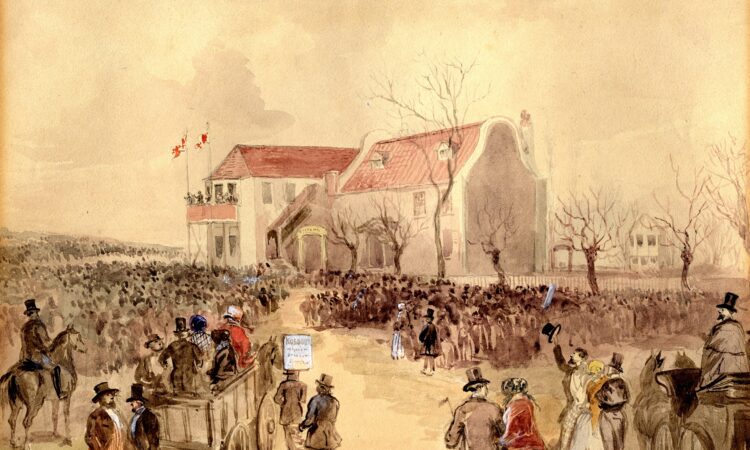
Rally in support of Lajos Kossuth, Copenhagen Fields, 1851. Image courtesy of Islington Local History Centre
Stop 1: Caledonian Park, Market Road, N7 9HF
By 1848, a storm of discontent swept through European states, culminating in a series of republican revolts against monarchies. Beginning in Sicily, most of Europe tried, and failed, to implement a revolution. The aftermath left many political activists repressed, disillusioned and often in need of refuge. A key figure of the Hungarian revolt was Lajos Kossuth, whose exile landed him in London for many years. His arrival to Britain was celebrated by many, with a rally held in Copenhagen Fields in Islington attended by 25,000-50,000 supporters. No longer ‘fields’, the site is home to Caledonian Park and the Cally Clock Tower.
Count István Széchenyi, politician and champion of the Hungarian Reform Age, made four long stays in England, and wrote in his diary, “In my opinion three things must be chiefly learnt from England – the constitution, the machines, and horse-breeding”. The ideas of constitutionalism and liberty resonated with Hungarian progressives and Britain presented a beacon of hope for revolutionaries in the nineteenth century. With no real immigration restrictions, a free press and the rights to free speech and assembly, vast numbers of continental radicals would pursue a new life in Britain. Read more…
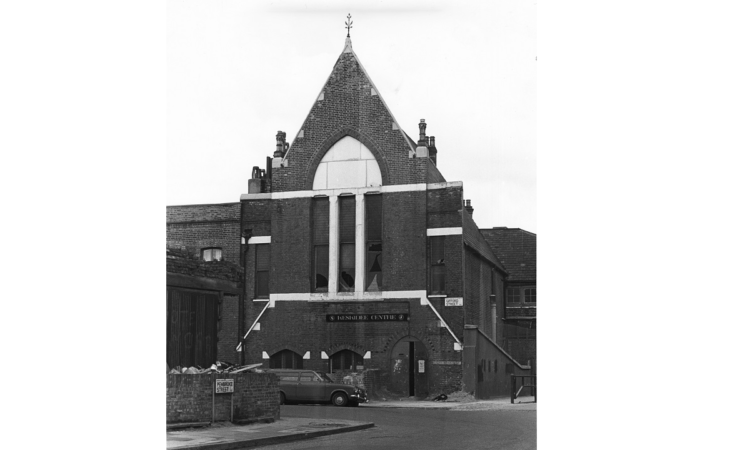
The Keskidee Centre, 1975. Image courtesy of Islington Local History Centre
Stop 2: Keskidee Centre, 64 Gifford Street, N1 0DP
The Keskidee Centre was envisioned by Oscar Abrams, a Guyanese architect and cultural activist, in the 1970’s. A centre providing educational, social and cultural activities for a disadvantaged and primarily West Indian community in the borough of Islington, the Keskidee provided a thriving space for Afro-Carribean arts and theatre to flourish in Islington. This was the first dedicated arts centre in Britain for the black community and would continue to be an important hub for African and Afro-Caribbean politics and arts well into the 1980’s.
In 1948 the British Nationality Act was enacted, conferring British nationality to all citizens within the Commonwealth and Colonies, and enabling them to work and settle in Britain with their families. Britain needed people to help rebuild the country after the Second World War and to assist with labour shortages in the transport system, postal service and the newly formed National Health Service. Many Britons from the former colonies within the West Indies, including Jamaica, Trinidad and Barbados, were invited to come Britain. Read more…
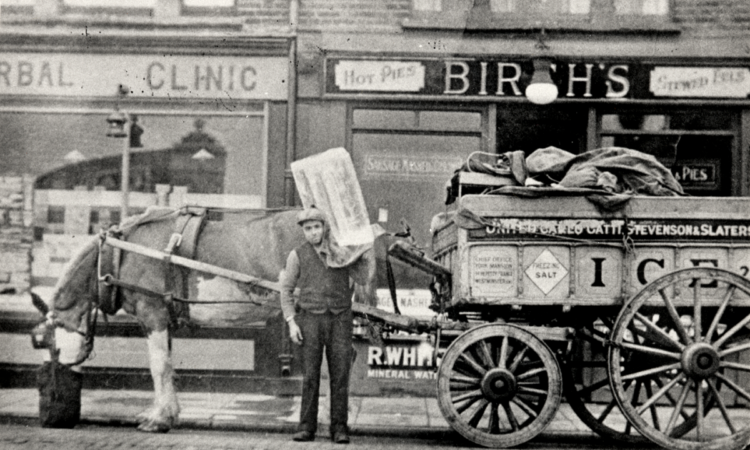
Carlo Gatti and his ice cart, 19th Century. Image courtesy of Islington Local History Centre
Stop 3: Gatti Ice Well Plaque, 445 Caledonian Road, N7 8TD
Italians have been settling in London for centuries, with a great many settling in Islington. Carlo Gatti left his Swiss-Italian home town in 1847 to go on to become a successful entrepreneur in Islington, bringing hot chocolate and ice creams to the masses. The plaque to his ice well on Caledonian Road remains an import reminder of Gatti’s personal legacy, and of the major role Italian culture played in shaping our borough and influencing what we eat.
During the early part of the nineteenth century, Italy was subject to significant and turbulent changes. Dominated by the French during the Revolutionary and Napoleonic Wars of the late eighteenth and early nineteenth centuries, Napoleon was proclaimed King of Italy in 1805. Large numbers of farmers were forced from their land as a consequence of widespread agricultural destruction following the wars. Many skilled workers were also forced to leave due to economic hardship, including barometer and precision instrument makers from Como and specialised plaster makers from Luca, who were attracted to the growing city of London. Key figures from Italian Society were exiled during this period by the new regime who also settled in London. Read more…
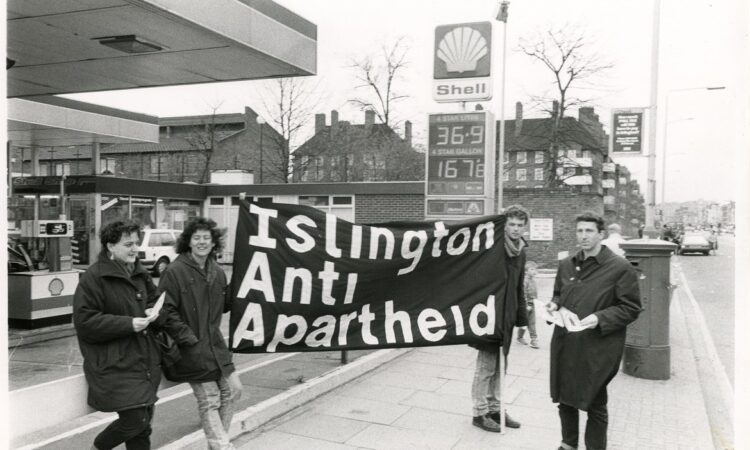
Fighting Apartheid in Islington. Copyright Morning Star, Courtesy Marx Memorial Library, London
Stop 4: ANC Print Shop, 1 MacKenzie Rd, N7 8QZ
Apartheid was official policy of institutional racism and segregation in South Africa between 1948 and 1994. It was a system designed to disempower black South Africans and ensure the white population remained in power. In the face of brutal repression, marginalised South Africans and their supporters fought against the apartheid regime, backed by people from all over the world. Many people in Islington joined the fight. They took part in demonstrations, boycotted South African goods, went undercover in South Africa and campaigned for political prisoners to be released. Islington was home to the African National Congress (ANC) London headquarters between 1978-1994, forming a base for actions around the country, and the ANC’s print shop in Islington at 1 Mackenzie Road would provide a space for the intensive printing of leaflets and posters promoting the Anti-Apartheid Movement cause.
Following the 1948 election, the African National Congress (ANC) joined the South African Indian Congress, the Coloured People’s Congress and the white Congress of Democrats to fight apartheid. The ANC Youth League began a ‘Programme of Action’ employing boycotts, strikes and civil disobedience. In 1955 many of those opposed to apartheid created the ‘Freedom Charter’ -a vision for a multi-racial South Africa. Some black South Africans broke away to form the Pan-Africanist Congress (PAC). Read more…
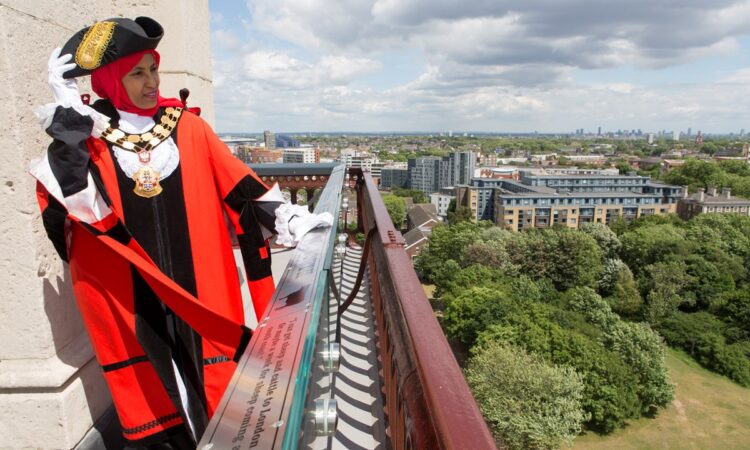
Mayor Rakhia Ismail at Cally Clock Tower, 2019. Image courtesy of Islington Council
Stop 5: Paradise Park Children’s Centre, 164 MacKenzie Rd, N7 8SE
Paradise Park Children’s Centre is an important stop in Islington’s refugee and migrant history for its links with a key member of Islington’s Somali Community, Councillor Rakhia Ismail. Since 2014, Councillor Ismail has held her monthly Councillor Surgery at Paradise Park Children’s Centre, helping her local community with a variety of services. In May 2019, Councillor Ismail made history when she was elected as Islington’s incoming Mayor and the first ever female Somali Mayor in the United Kingdom. Islington has one of the largest Somali communities in Britain and as a local Somali resident and Councillor, Councillor Ismail has been at the forefront of supporting Somalis in London, alongside her wider role supporting her ward of Holloway.
From the early 19th Century, when Somaliland became a British Protectorate, the first Somali seamen came to London, to work in the Merchant Navy, and settled near the docks in Tower Hamlets. Accounts of the time show that many of these seamen only planned to stay in London long enough to earn enough money before going back to their families. In Somalia, they were dubbed ‘The Fortune Men’ as they promised to take their wealth back home. Because they saw their stay as temporary, many did not learn English or integrate fully into British society. Read more…
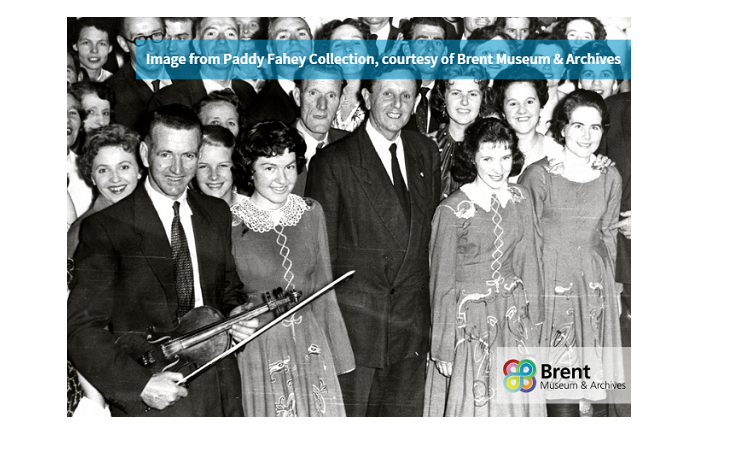
Jimmy Power, left, with his fiddle. Image from Paddy Fahey Collection, courtesy of Brent Museum & Archives
Stop 6: Victoria Tavern, 203 Holloway Rd, N7 8DL
Over the past three centuries Islington became a new home for thousands of Irish economic migrants, who brought with them many cultural traditions and the melodic sounds of Irish music. In the 20th Century, it was common to hear the sound of the Irish fiddle wafting out of windows and into the street from pubs such as the Favourite and the Victoria. Jimmy Power was one of the finest Irish fiddle players on the London-Irish music scene, bringing the sounds of his homeland to these Islington pubs in the 1960’s – 1980’s. Over time, many of the pubs that hosted Irish musicians have shut down or been revamped for the modern day, but The Victoria in Holloway still physically stands tall as a symbol of what once was.
The arrival of the Irish into Islington began in the 1700s, mainly as agricultural labourers. The early part of the 19th Century attracted large numbers of Irish migrants, drawn by London’s rapid economic growth. This increased when many from Ireland fled the effects of the Irish potato famine during the 1840s. Read more…
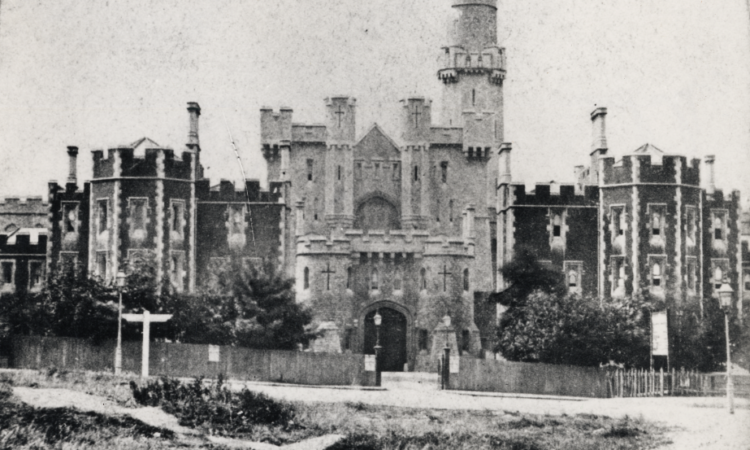
Entrance to Holloway Prison, 1860’s. Image courtesy of Islington Local History Centre
Stop 7: Holloway Prison, Parkhurst Rd, N7 0NU
Holloway Prison operated from 1852-2016, exclusively holding female and young offenders from 1903. Thousands of women were imprisoned there over its history. The story of women behind bars has long held the public imagination and many well-known prisoners have passed through Holloway’s doors. A vast array of experiences from Holloway were captured in Islington Museum’s 2018 project Echoes of Holloway Prison, including that of German Jewish refugees interned by the British government as ‘enemy aliens’. Eva Holmes was a small child when this happened to her family. They had sought a refuge and a new life in England, but the tense political climate ended up working against them. The diary of Eva’s mother and Eva’s letters help us to understand the hardships they faced.
At the beginning of the twentieth century, tens of thousands of Eastern European Jews fleeing persecution in their homelands arrived in Britain. Anti-immigration and anti-Semitic feelings towards these new arrivals grew. In 1902 the Bishop of Stepney said Jews were ‘swamping whole areas once populated by English people’. Read more…
Islington has long been a place where migrants and refugees have settled. The borough is central, accommodation has often been cheap and there is a history of tolerance – Finsbury was the first UK constituency to elect a South Asian MP – Dadabhai Naoroji in 1892. Islington today is an especially diverse place with 33% of residents born outside of the United Kingdom compared to 14% nationally. The most common countries of birth for Islington residents outside the UK today are Ireland, Turkey and the United States – and we have explored a little bit of the rich Islington Irish migrant story in this tour.
Our tour this week has concentrated on the migrant experiences, both current and historical, around the Holloway area. This area also houses some of the many Islington based organisations who support refugees and migrants in varied ways. We know that refugees suffer disproportionately with poor mental health – 61% of asylum seekers in the UK experience serious mental distress and there are organisations who do amazing work in this sphere. Some organisations work to build resilient and healthy communities and individuals in Islington others use Islington as their base to reach out nationally and internationally to campaign and develop programmes for refugees and migrants. Read more…
For more on Islington as a Place of Refuge, follow us on Twitter @IslingtonMuseum @CallyClockTower @IslingtonWalks or visit www.friendsofim.com
